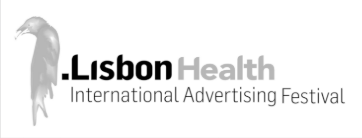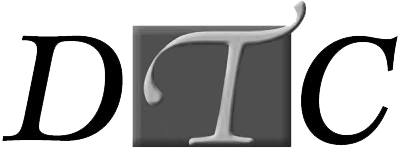Jorge Plasencia Left Corporate World to Establish República, Which Four Years Later Integrates Top-Tier Firms’ Marketing
After working for everyone from the Florida Marlins during their first world championship season to Emilio and Gloria Estefan during Miami’s “Latin Explosion,” República Chairman and CEO Jorge A. Plasencia decided to do things his way. He left the corporate world behind to establish the firm with his business partner, Luis Casamayor.
Now, four years later, it counts Burger King, the Miami Dolphins and Sedano’s Supermarkets as clients. The firm offers integrated marketing communications, bringing together traditional advertising, public relations, promotions and digital media to help clients accomplish strategic goals.
“We work hand-in-hand, understanding what their strategy is and where they want to go, where they want to take sales, what markets they are planning to develop, and we’re with them every step of the way,” Mr. Plasencia said.
He discussed the firm’s origins and future, as well as Amigos For Kids – the child and family support charity he’s run for about 20 years, in República’s new Coral Way office with Miami Today staff writer Zachary S. Fagenson.
Q: How did you end up at República?
A: It’s been a winding road. I started as a kid. I got a work permit when I was 14 so I could intern at a Spanish, Latin radio station here in Miami, Radio Mambí. I was an intern eight or nine months. I was in radio all throughout high school. I was promoted my senior year in high school – promotions director of the stations. One of the radio stations where I worked had the Spanish language rights for the Miami Dolphins, Florida Marlins and Florida Panthers. I was the liaison between the teams and the radio station. I was in charge of marketing and branding and forged a relationship with the vice president of marketing for the Florida Marlins. He offered me a job, and I accepted.
That was 1996. Back then the Marlins had a lot of opportunity, especially in Miami-Dade, with the Hispanic community. I put a plan together and was given incredible support from Wayne Huizenga and the ownership at the time. They brought me in as director of Hispanic marketing. It was groundbreaking, not only in Miami but in the league. Very few teams were embracing the Hispanic community. It was virgin territory. We produced a monthly newspaper called Marlin Mensual. We had a TV show called Al ritmo de las Marlins. We started Parrandas con los Marlins, street parties, to take the team into the heart of the community. We sold them to sponsors. We had this truck called the Road Show, and we’d bring the players to sign autographs. We’d get 20,000, 30,000 people showing up to these little block parties. A year later the Greater Miami Chamber of Commerce named us the Hispanic Marketer of the Year. We had officially made [the Marlins] the team of the Americas. I was named head of hospitality and entertainment for the playoffs and the post season. I handled everything from organizing parties to national anthem singers to, when we won the World Series, the ticker-tape parade downtown. I have a World Series ring that I don’t wear, but I treasure it. It was an incredible time in my career. Wayne decided he was going to sell the team, and I remember thinking, “You’ve got to leave on a high note.” Because of all the stuff I had done, headhunters started calling. I started getting called by all sorts of companies. I had asked Gloria Estefan to sing at the World Series. Around that time the Estefans were focused on growing their business. When Wayne made that announcement, Emilio and Gloria said to me, “Why don’t you work for us?”
In November of ’97, they brought me on board as director of marketing for Estefan Enterprises. I was overseeing marketing, public relations. While I was there the Latin music explosion happened. All of a sudden we were at the epicenter. Emilio was either producing or man-aging anybody and everybody you can think of. I worked with Shakira from day one, with Jon Secada, Ricky Martin, Jennifer Lopez, Thalia, Marc Anthony. I was there at the middle of it. A year and a half into it they promoted me to vice president of the company. I traveled all over the world with them. We opened Bongos Café at Walt Disney World. We opened Bongos at the AmericanAirlines Arena in 2000. We had a publishing deal going with Ocean Drive. We had hotels, we had a music publishing company, a record label. I was overseeing the expansion, I was overseeing marketing, I was overseeing corporate development and public relations. All that was great [but] I always longed to go back to media. My last hurrah with Emilio and Gloria was an event at the White House. A month after Sept. 11, I coordinated an event with a little over 100 Hispanic artists called El Ultimo Adios, the Last Goodbye. Every Latin singer you could think of, from Gloria to Christina Aguilera to Celia Cruz, performed. Right after that I left. I went to work as vice president of marketing, corporate communications and public affairs for [the] Hispanic Broadcasting Corp. At the time HBC was the largest publically-traded radio broadcaster in the country, based in Dallas. I was in charge of marketing for 50 radio stations across the country. I was a corporate employee working out of Miami, working with most of the people I had started my career with. I was there about a year when my boss, McHenry “Mac” Tichenor, calls me to Dallas and said, “I’ve agreed to merge with Univision, and we’re going to have to spend some time on the hill. This is about communicating our message for the Hispanic community.” I got to know the intricacies of Washington, lobbying, the hill, Congress, the Senate. Many people thought that the deal wasn’t going to happen. It got approved at justice and then it got approved at the FCC. We were going to become one company, Univision Radio. I was named head of the radio network. I was vice president and operating manager of the radio network and handled the synergies between the television side, the radio side and the online side. Since day one, I always wanted to be an entrepreneur, always wanted to be my own boss.
Q: How did you decide to leave and start your own business?
A: I had that corporate career and had done pretty well. I was always public about the fact that I wanted to do my own thing. Luis [Casamayor], my business partner, and I have been friends a long time, and he would talk to me about his advertising agency. I was at Univision, and one day we were talking and said, “Why don’t we try this together? We can open up an integrated marketing firm that brings every facet of marketing to the table and offer this one-stop shop to clients.” We decided that Cosmyk Group, his company, would fold into this new entity.
Q: How long ago was that?
A: The conversations were happening in ’05, ‘06. We made the final decision the summer of ’06 and started Nov. 13, 2006. I let Univision know about four months prior, and they were supportive. In those four months Luis and I were able to formulate everything. Luis and I worked with our attorneys on our operating agreement. We filed it away, never looked at it again. Everything was clear since day one.
Q: What was the first success for the company?
A: One of the first successes was when we were able to sign up Burger King. That project led to another, which led to another. Anything they do in the inclusion area we handle. That was a great moment for us, because we were getting on the national map. Then we landed the Disney business. We were up against large, national agencies.
Q: How did you know you had the resources to do integrated marketing and do it well?
A: We started hiring people. We started with Janice Lusky Greenspan. Cosmyk had a very strong team of creatives in place. We needed to bring on the other side, so Janice came on to head up public relations. We brought on few other people and started growing. There was one team working on the Web sites, one agency doing public relations, one doing advertising. We still collaborate with other agencies. It’s part of the business. That said, we do offer one solution to many clients.
Q: You moved into this building eight months ago. Why move to Coral Way?
A: We looked everywhere. We looked in the Design District. We looked in Wynwood, we looked downtown, we looked on Brickell, in the Gables. We wanted to try to stay east if we could, east of 57th Avenue. We wanted close proximity to the airport. I think Coral Way is going to be the next great part of Miami. It’s central, it’s beautiful. It has the urban feel [and] it’s neighborhood-esque.
Q: What is your target market?
A: Although we’re based in Miami our business is across the country and in Latin America. We’re often in New York, DC, Los Angeles, Chicago and Dallas. That said, we have some great local businesses, like Sedano’s Supermarkets. We’ve been their agency for about two years. We’ve been rebranding them, repositioning them, helping them grow into new markets, and that is how we see ourselves for clients. We see ourselves not only as their advertising agency, their public relations firm. We see ourselves as true strategic partners for them. We’re there in concert with them, and we’ve got each other’s back.
Q: How does República pitch itself to potential clients?
A: We’re a hardworking team of marketers that will work with you to make sure your goals are met. We are strategic. We are nimble. We speak regularly, we meet regularly, and that’s the part I enjoy – the interaction with the clients and being able to discuss their plans, their goals, their dreams, their strategies. When you’re working alongside clients you get to know their business.
Q: You’re a Hispanic marketing firm. Are there any special considerations you have to make when working with that demographic?
A: We have an international team here and we know the Hispanic community intimately. I’m bullish on the Hispanic market. I think it’s going to continue to grow for the next 20 or 30 years. It’s a market that is extremely committed to family, extremely committed to community and that spends a lot of money. Brands are starting to wake up and say, “What’s our strategy?” and it’s great to be at the front and center of that.
Q: How much do Hispanic markets differ and in what ways?
A: Each country is different. What you do in Mexico is very different from what you do in Venezuela, Colombia, Costa Rica or Brazil, just like you wouldn’t use the same strategy in the UK that you would in the US. Because of our geographic location, because of the fact that a lot of the big companies have regional headquarters here, we’re getting more and more of that business. It’s a big opportunity for us.
Q: There have been lots of changes in the way media is transmitted. What opportunities do you see for the Hispanic market?
A: Hispanics over-index on technology. We use technology more to communicate than the Caucasian community. We use it to communicate with family and many times with family in our home country. Mobile communications is going to continue to grow and explode.
Q: How do you weigh different forms of communication against each other when developing a strategy for a client?
A: Everybody should have a developed Web site with significant content. They should have a presence on Facebook and keep it fresh. How people receive information has changed, and you have an opportunity to get your message out on these mediums in an eloquent and engaging way. We haven’t seen the amazing road ahead of us with Facebook and Twitter and social media.
Q: When the economy went south, many companies slashed marketing budgets. Are they ready to invest again?
A: As we’re planning for 2011, companies are definitely investing more. They’re being more cautious and frugal with their spending, but everybody’s, if not back to their 2006 spending, getting there. Companies next year are going to invest big time.
Q: How do you discuss spending with clients you think should be investing more?
A: If they hire us, they trust us. If we feel there’s a specific opportunity that will bring customers and sales, we’re going to recommend something. Customers [are] going to find the money, because that investment is going to pay off. We track that investment and say, “How did this affect us positively or negatively?” We’re never resting on our laurels. We’re always making sure things are moving for our clients.
Q: How do you envision the next five years?
A: I have a great senior leadership team that are excellent at what they do, and we’re going to continue to grow. We have looked at possible acquisitions, alliances. We’ve been approached a number of times by bigger firms. We’re very happy where we’re at. We’re excited that we’re growing. We’re thrilled that we’re based in Miami. Where are we headed? If you would have asked me four years ago [if] I think we’d be here today, I didn’t know. I wake up every morning, work hard, do my best, help as many people as I can, get involved in the community. At República we promote that people get involved. We do a lot of pro-bono work, because we love it and we believe in it. I not only want to be a good company, but I want to be a good corporate citizen. We live for that.
Q: What sort of community organizations are you involved with?
A: Next year is the 20th anniversary of an organization that’s near and dear to my heart and that I was part of starting in 1991, Amigos for Kids. I’ve been chair now for many years, and it’s all about the people. We have an extraordinary board of directors, hundreds of volunteers. It’s about our staff. Amigos for Kids is in this community helping children, helping families, and we do very important work. Twenty years ago would I ever think it would become what it became? No. I’m humbled by the amount of support the organization receives. In the next year or so the time will come for me to step down as chair. We have brilliant folks taking it for the future. I am a strong believer that it’s not about one person, it’s about a community of people, and I would love for one of those people take it over and continue the legacy of Amigos. I will always be involved and I’ll be a very proud volunteer forever. I think 20 years is a great ride. It’s a great, great ride.
Q: How did the recession affect Amigos for Kids and how did you counteract that?
A: We have mentoring but we also have after-school programs. We have programs with the public school system. We have parenting classes. We have all sorts of programs for children and families, underprivileged children.
Amigos felt [the recession] because a lot of companies held back on their philanthropic giving. That said, Amigos is definitely back on track. The people are supporting it. There’s an organization called CharityNavigator.org that tracks nonprofits across the country based on fiscal responsibility, and Amigos has received four stars, their top rating, for three consecutive years. Only 12% of non-profit organizations in this country receive four stars for three consecutive years. I’m very proud of what we’ve done. Every dollar that we receive, about 90 cents goes back to the kids, back to the mission. We’re blessed with great support.
Q: How do you spend your spare time?
A: I love the outdoors. I love the water. I don’t have my own boat yet, but that’s part of the plan. I love aquatic activities, and they help me release stress. I have a big supportive family and I spend a lot of time with them. In life if you’ve got a few friends, you’re lucky. I have a good group of people close to me, that I consider brothers and sisters, people that I love dearly that are a part of my life, that I enjoy spending time with. I’m 36, so about 22 years working. It’s a long time, especially for a young guy, but I don’t feel it. I feel like I just started yesterday and although I worked in radio, at the Marlins, for the Estefans and Univision, every day I feel like I’m a little kid. I never take anything for granted. I love learning, no matter what it is. Part of what’s made me is waking up every day like I just got to go make it happen.
Source: Miami Today, Zachary S. Fagenson


























